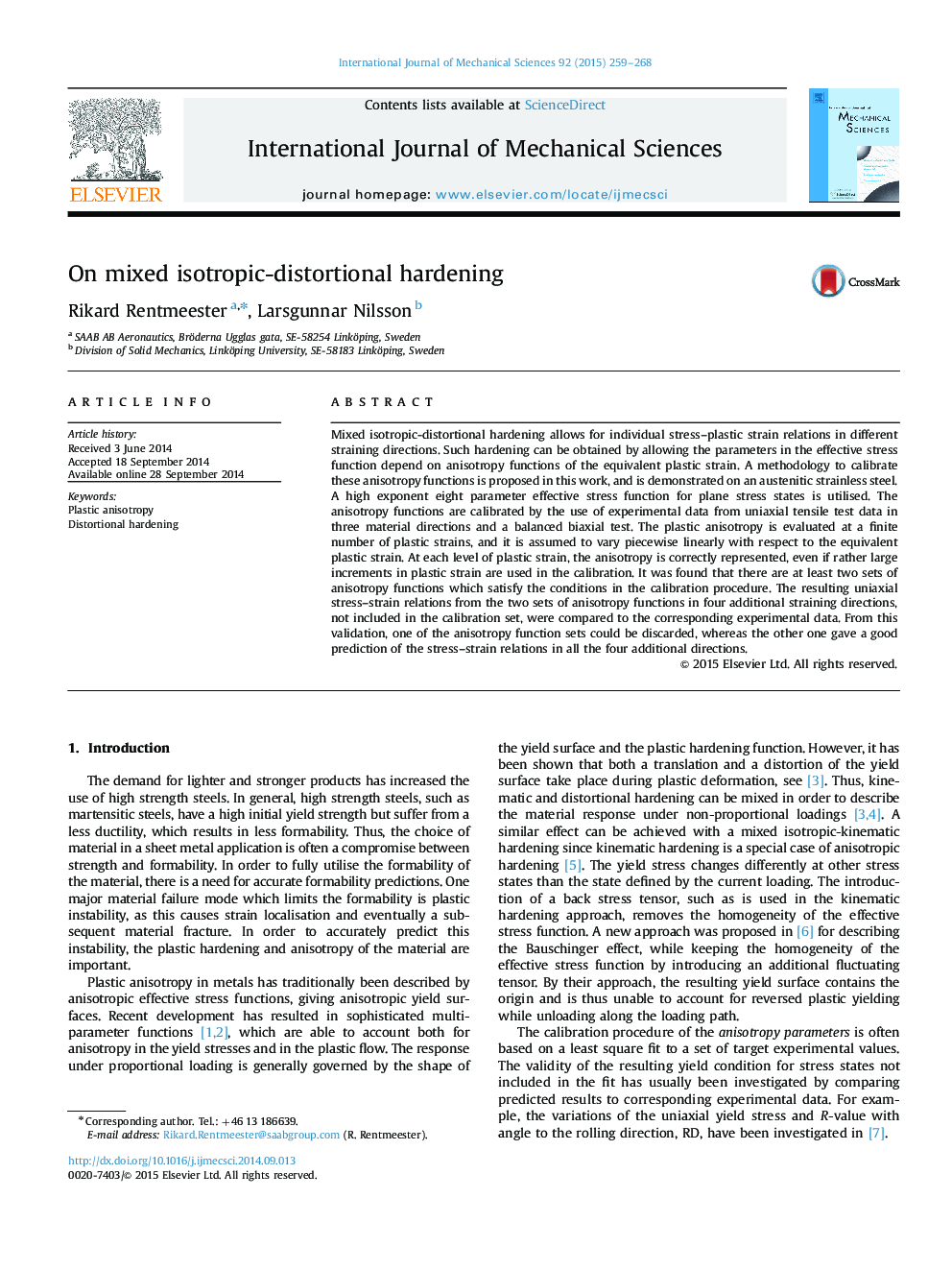| کد مقاله | کد نشریه | سال انتشار | مقاله انگلیسی | نسخه تمام متن |
|---|---|---|---|---|
| 782303 | 1464988 | 2015 | 10 صفحه PDF | دانلود رایگان |
• Isotropic-distortional hardening gives individual hardening in different directions.
• A novel methodology for evaluation of the variation of yield stress ratios.
• Detailed validation of the developed model.
• Two yield surfaces fulfilling the same target values are shown and validated.
Mixed isotropic-distortional hardening allows for individual stress–plastic strain relations in different straining directions. Such hardening can be obtained by allowing the parameters in the effective stress function depend on anisotropy functions of the equivalent plastic strain. A methodology to calibrate these anisotropy functions is proposed in this work, and is demonstrated on an austenitic strainless steel. A high exponent eight parameter effective stress function for plane stress states is utilised. The anisotropy functions are calibrated by the use of experimental data from uniaxial tensile test data in three material directions and a balanced biaxial test. The plastic anisotropy is evaluated at a finite number of plastic strains, and it is assumed to vary piecewise linearly with respect to the equivalent plastic strain. At each level of plastic strain, the anisotropy is correctly represented, even if rather large increments in plastic strain are used in the calibration. It was found that there are at least two sets of anisotropy functions which satisfy the conditions in the calibration procedure. The resulting uniaxial stress–strain relations from the two sets of anisotropy functions in four additional straining directions, not included in the calibration set, were compared to the corresponding experimental data. From this validation, one of the anisotropy function sets could be discarded, whereas the other one gave a good prediction of the stress–strain relations in all the four additional directions.
Journal: International Journal of Mechanical Sciences - Volume 92, March 2015, Pages 259–268
